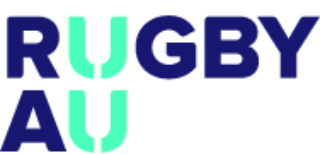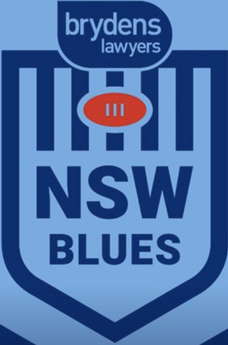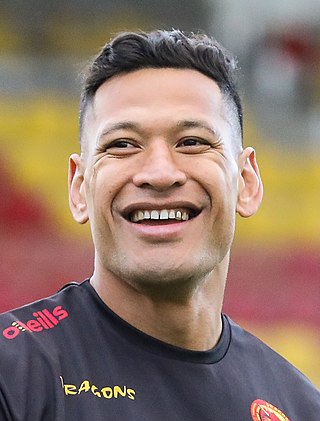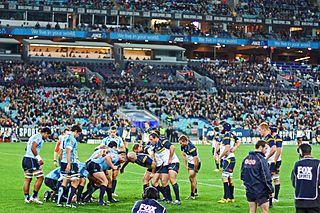
The Australia national rugby union team, nicknamed the Wallabies, is the representative national team in the sport of rugby union for the nation of Australia. The team first played at Sydney in 1899, winning their first test match against the touring British Isles team.

The New South Wales Waratahs, referred to as the Waratahs, are an Australian professional rugby union team representing the majority of New South Wales in the Super Rugby competition. The Riverina and other southern parts of the state, are represented by the Brumbies, who are based in Canberra, Australian Capital Territory (ACT).

The history of rugby league as a separate form of rugby football goes back to 1895 in Huddersfield, West Riding of Yorkshire when the Northern Rugby Football Union broke away from England's established Rugby Football Union to administer its own separate competition. Similar schisms occurred later in Australia and New Zealand in 1907. Gradually the rugby played in these breakaway competitions evolved into a distinctly separate sport that took its name from the professional leagues that administered it. Rugby league in England went on to set attendance and player payment records and rugby league in Australia became the most watched sport on television. The game also developed a significant place in the culture of France, New Zealand and several other Pacific Island nations, such as Papua New Guinea, where it has become the national sport.

Rugby Australia Ltd, previously named the Australian Rugby Union Limited and Australian Rugby Football Union Limited, is an Australian company operating the premier rugby union competition in Australia and teams. It has its origins in 1949. It is a member of World Rugby. Rugby Australia has eight member unions, representing each state and the Australian Northern Territory and Australian Capital Territory. It also manages national representative rugby union teams, including the Wallabies and the Wallaroos.

Herbert Henry Messenger, nicknamed "Dally" and sometimes "The Master" was one of Australasia's first professional rugby footballers, recognised as one of the greatest-ever players in either code. He played for New South Wales in the first match run by the newly created New South Wales Rugby Football League, which had just split away from the established New South Wales Rugby Football Union.

The New South Wales rugby league team has represented the Australian state of New South Wales in rugby league football since the sport's beginnings there in 1907. Also known as the Blues due to their sky blue jerseys, the team competes in the annual State of Origin series. This annual event is a series of three games competing for the State of Origin shield. As of 2022, the team is coached by Brad Fittler and captained by James Tedesco.

Parramatta Stadium was a sports stadium in Parramatta, New South Wales, Australia, 23 kilometres west of Sydney's central business district. The stadium was the home ground of several western Sydney-based sports teams, at the time of closure the most notable were the Parramatta Eels of the National Rugby League and the Western Sydney Wanderers of the A-League.

Rugby union is a football code within Australia with a history of organised competition dating back to 1864. Although traditionally most popular in Australia's rugby football strongholds of New South Wales, Queensland and the ACT, it is played throughout the nation.
John Edward Thornett, MBE was an Australian rugby union player, who played 37 Tests for Australia between 1955 and 1967 and made an additional 77 representative match appearances. He captained Australia in 16 Test matches and on an additional 47 tour matches on the eight international rugby tours he made with Wallaby squads.
Kenneth William Catchpole was an Australian rugby union footballer. A state and national representative half-back, he played twenty-seven matches for Australia, thirteen as captain. Catchpole rose through the ranks at the Randwick club as a young man, before making his debut for New South Wales at only 19 years of age, then captaining Australia at age 21. He is considered one of Australia's greatest rugby scrumhalves.
Sport in New South Wales describes participation in and attendance at organised sports events in the state of New South Wales in Australia. It is an important part of the culture of the state. In terms of participation, the most popular sports in the state are netball, tennis and soccer.

Frank Burge was one of the greatest forwards in the history of rugby league in Australia. Later Burge became one of the game's finest coaches. His club career was with Glebe and the St. George Dragons. He represented New South Wales on twenty-six occasions and played thirteen test matches for the Kangaroos and played for Australia in a further twenty-three tour matches.

Arthur 'Pony' Halloway (1885–1961), was a pioneering Australian rugby league footballer and coach. Born in Sydney, New South Wales he played for the Glebe Dirty Reds (1908), Balmain Tigers and Eastern Suburbs (1912–1914), in the New South Wales Rugby Football League premiership. He played for New South Wales in the first rugby match run by the newly created 'New South Wales Rugby Football League' which had just split away from the established New South Wales Rugby Football Union.

Herbert R. Gilbert was an Australian rugby league and rugby union player – a dual-code international. He represented the Wallabies in three Tests in 1910 and the Kangaroos in seven Tests from 1911 to 1920, his last two as captain. The captain-coach of the St. George Dragons club in Sydney in their inaugural season, he is considered one of Australia's finest footballers of the 20th century. His sons, Herb Gilbert, Jr and Jack Gilbert were also notable rugby league footballers.
William Robert Hardcastle born in Wellington, New Zealand was a pioneer New Zealand and Australian rugby union player and an Australian rugby league footballer. He represented both countries in union and Australia in league. He was one of the first dual-code rugby internationals.

Israel Folau is an Australian professional rugby union footballer who plays for the Shining Arcs in the Japan Rugby League One and the Tonga national rugby union team.

Rugby league football has been played and watched by people in the Australian state of Victoria since the early 20th century. While for most of its history there the game's popularity has been marginal due to the dominance of Australian rules football in Victoria, rugby league's popularity has rapidly increased in recent years in the state's capital of Melbourne, due mainly to the introduction of a professional Melbourne-based team in the national competition.
Harry James Wells is an Australian former representative rugby league footballer who played in the 1950s, 1960s and 1970s. A centre whose club career was played along the New South Wales coast as well as in Sydney with the South Sydney Rabbitohs and the Western Suburbs Magpies, he has since been named among the nation's best players of the 20th century.
The Newcastle rugby league team is a representative rugby league football team made up of players selected from the Newcastle Rugby League's first grade clubs. Also called Newcastle Firsts, the team has been assembled occasionally since rugby league's first season in Australia in 1908.

Rugby union in New South Wales is one of the leading professional and recreational team sports. Rugby football began to be played in Sydney’s schools in the early 1860s. In the more than 150 years since, the game in New South Wales has grown to include more than 100,000 participants and the Rugby World Cup Final has been hosted in Sydney.













